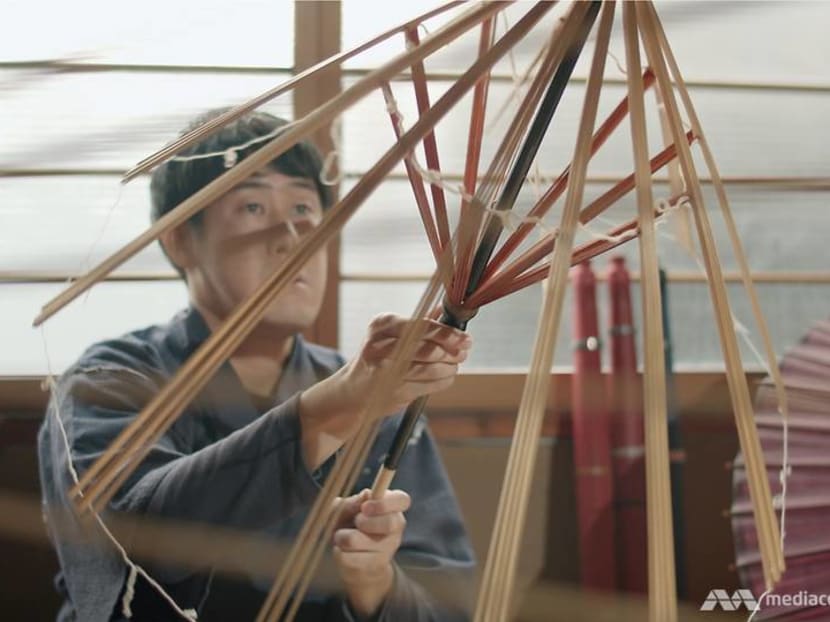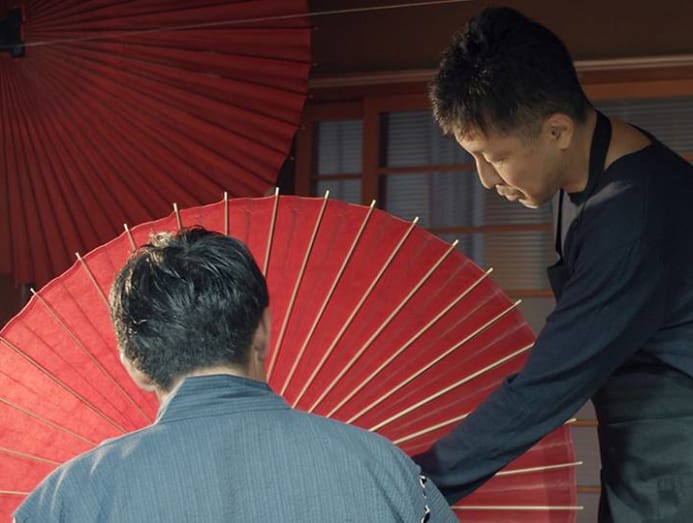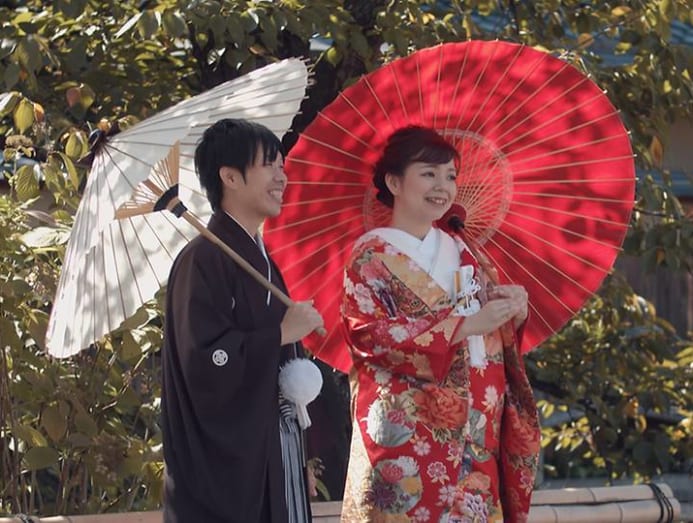He is one of only 20 craftsmen in Japan keeping a 329-year-old tradition alive
At 34, Noriaki Tsujino left his sales job to move to Kyoto and craft traditional Japanese umbrellas for Tsujikura, Japan’s oldest wagasa-maker.

Noriaki Tsujino is one of only 20 professional craftsmen in Japan who makes wagasa. (Photo: Freestate Productions)
In a country where tradition is everything, Noriaki Tsujino is one of the last sworn guardians of a 329-year-old legacy, and one of only 20 professional craftsmen in Japan who makes wagasa – a traditional Japanese umbrella made of bamboo and washi paper. “What I like about wagasa is the shape when it is closed, the circle it forms when it is open. Each umbrella is unique and has its own shape and style,” romanticised Tsujino.
His interest began as a hobby when he was 25, when he would travel around various parts of Japan to study the craft. In 2014, he received a call that would change his life forever. He had been invited to become a professional wagasa craftsman at the famous Tsujikura of Kyoto, the oldest wagasa-making company in Japan that dates to 1690.
At the ripe age of 34, Tsujino left his job as a salesman to begin a new life at Tsujikura. As a young upstart with no formal education in the craft, he went through rigorous training under the tutelage of Motohiro Kinoshita, who heads Tsujikura. The stoic mentor took over his wife’s 17-generation family business as there were no more male heirs in her family to do so.
“Tsujikura has been operating for 329 years. However, because of World War I and II, all the craftsmen left for the battlefield and we had no one left. Over the following 80 years, operations came to a standstill. It was under those circumstances that I began to nurture a new generation of craftsmen,” explained Kinoshita.

“The most important thing is to pass on the skills I need to nurture young craftsmen. As they age, they will nurture the next generation of craftsmen. Unless I build this process, these skills will be lost.”
Wagasa – a popular accessory for kimono-clad women – is made of bamboo and washi paper. Washi paper is glued on bamboo spokes and waterproofed with plant oil. There are three basic varieties of wagasa: The very durable and waterproof ban-gasa; the lightweight janome-gasa used by geikos and maikos for traditional Japanese performances; and the non-waterproof, all-natural hi-gasa, designed only to provide shelter from the sun.
“The sound of rain hitting the washi paper is very unique, a sound that cannot be reproduced with vinyl umbrellas. I would be so happy for people to use wagasa and feel how special they are,” enthused Tsujino.

Today, wagasa maintains its appeal with the geikos in Kyoto, or is used in traditional or religious events. But, the charming parasol certainly hasn’t gone unnoticed in the modern world. Recently, it’s has become popular in interior design as a colourful lighting feature. In the realm of watchmaking, a recent collaboration with luxury brand Franck Muller also put wagasa on the map. And now, Tsujikura is working on a project with Omega for the 2020 Tokyo Olympic Games.
Although people are starting to take notice of the alluring beauty of wagasa, it remains doubtful if the tradition may stay on for another century, as the resources needed for its creation are on the decline. “The number of craftsmen who make washi paper for wagasa is decreasing, and there are fewer craftsmen who cut and bring us the best bamboo. The number of craftsmen in every genre is diminishing. That is going to be a serious problem,” lamented Kinoshita.
Young craftsmen like Tsujino are key to the survival of the wagasa legacy. “Mr Kinoshita’s son will probably succeed this family business as the 18th generation. I play the role of a middleman between the 17th and 18th generations to connect them. I believe this is a very important mission given to me.”





